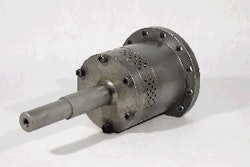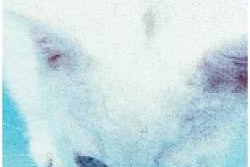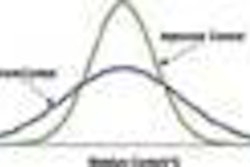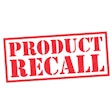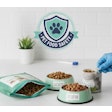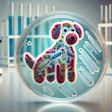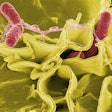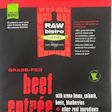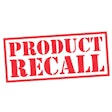Do you want your plants to adopt human food standards for sanitation? It will entail using good manufacturing practices (GMPs), sanitation standard operating procedures and eventually HACCP. Your motivation to do so will come mostly from consumer expectations and market competition.
Problem areas
The problem areas commonly seen in petfood facilities include:
Potential for cross-contamination of raw and finished product;
Lack of criteria for CIP cycles in canned products;
The issue of water and product residue present in dry operations; and
Inadequate cleaning of processing equipment.
Good manufacturing practices
GMPs underlie any petfood sanitation management system. They cover the entire spectrum of plant and personnel operations and they broadly define the requirements and measures that prevent adulteration of petfoods due to unsanitary conditions.
GMPs, by their very nature, are general statements of sanitation requirements. For effective sanitation control, each food processing facility has to establish formal procedures that are specific for cleaning in their own facility.
The sanitation standard operating procedures (SSOPs) are specific action steps based on the GMP requirements. A typical SSOP will describe a specific set of objectives, as well as the activities you do to meet these standards. When SSOPs are well-designed and fully implemented, they will control safety hazards and quality hazards in the petfood plant environment.
HACCP is not within the scope of this article, but it's there in the background and you can't ignore it. Effective GMPs and SSOP programs are related to HACCP in that they are required prerequisite programs for establishing HACCP.
The master plan
The foundation of a petfood plant sanitation program is the master sanitation schedule, or the MSS. The MSS specifies the cleaning activities that are to be completed and documented on a continuous basis in a calendar-time fashion. One advantage of the MSS is the focus that it brings to the sanitation and cleaning process. Scheduling daily, weekly and monthly sanitation activities and making sure that the specific tasks are completed in a timely manner are weaknesses now in many existing sanitation programs in petfood and human food processing facilities.
The people in the plant who actually do the cleaning should be asked for their ideas on how to improve the cleaning process. Sometimes an experienced sanitation consultant may be brought in to help with a short-cut in identifying some of the needs of the program. But the ultimate responsibility needs to be accepted and the accountability of the program needs to be accepted by the plant management and personnel.
Ease tension
After you've fully analyzed the plant's cleaning and sanitizing needs, it is time for writing the master plan. A clearly-written master cleaning schedule should communicate with the company about procedures, tools and frequency of cleaning times required to meet those needs. I can't over-emphasize the need for this participatory-type of development for these SSOPs. So everyone is on the same page in terms of executing these SSOPs. Establishing standards really helps to relieve some of the tension between the production and quality departments.
The questions of who, what, when and how of the cleaning plan for each piece of equipment or area need to be answered. Who will do the cleaning? Will the cleaning task be performed by the cleaning/sanitation crew or by the production line staff?
Those employees who do the cleaning and sanitizing need to be clearly designated. Specific cleaning tasks can be assigned to employees according to their job titles and job descriptions. If production line people do the cleaning, their tasks should be specifically assigned according to the areas they work in. Posting the job titles with the assigned cleaning tasks creates an atmosphere of accountability to make sure the jobs get done.
Cleaning schedules
What will be cleaned? Posting the schedule of the pieces of equipment and the facility areas makes workers, supervisors and managers aware of the places or equipment that perhaps in past times were sources of problems because they were given less attention or no attention.
Cleaning schedules should be arranged in a logical order. The tasks should be grouped by area within the facility and in the order that the cleaning should be performed. Often, posting the changing daily schedules and the names of those responsible for each task can be used. The advantage of this is, it's like a preview of coming attractions. It will draw people there to look at it and keep up on the changes.
Clearly, written instructions to guide the workers through each step of the cleaning and sanitizing process should be provided for every cleaning task on the MSS. These kinds of instructions provide for a common understanding of the requirements and standards of performance within the plant.
Sanitizing chemical contamination
Prevent cleaning and sanitizing chemicals from contaminating product. I've seen this plenty of times. Even though it's not that common, when it occurs it usually has disastrous results. You should always specify by name, cleaning tools and chemicals to be used. Color code your cleaning supplies to distinguish between petfood contact and non-food contact chemicals and cleaning tools.
Well-designed SSOPs are extremely effective in controlling hazards. One thing that's very useful is using control charting to make daily or weekly control charts. On a practical level, this is an excellent tool to judge, over time, the effectiveness and the performance fluctuations in your system. Many times we've had clients who have done this charting and they pick up incipient problems weeks ahead of the time.
Training is crucial for success
To have any hope for success of an effective sanitation program, all employees have to be trained. Employees should be trained in personal hygiene, GMPs, cleaning and sanitation procedures and personal safety. It's a good idea to keep records of their training as well, so that you can monitor their progress. If they have weaknesses, then you can address those before you get into trouble. Documentation is required for sanitation programs for regulatory purposes and to gain management's confidence in the safety of their product.
Records should be authenticated with signatures and dates. It's really important to have accountability for everything.
These challenges will continue to exist for the foreseeable future in the petfood industry. Ultimately, the quality and safety hazards will be controlled in the petfood industry much more than they are now.

